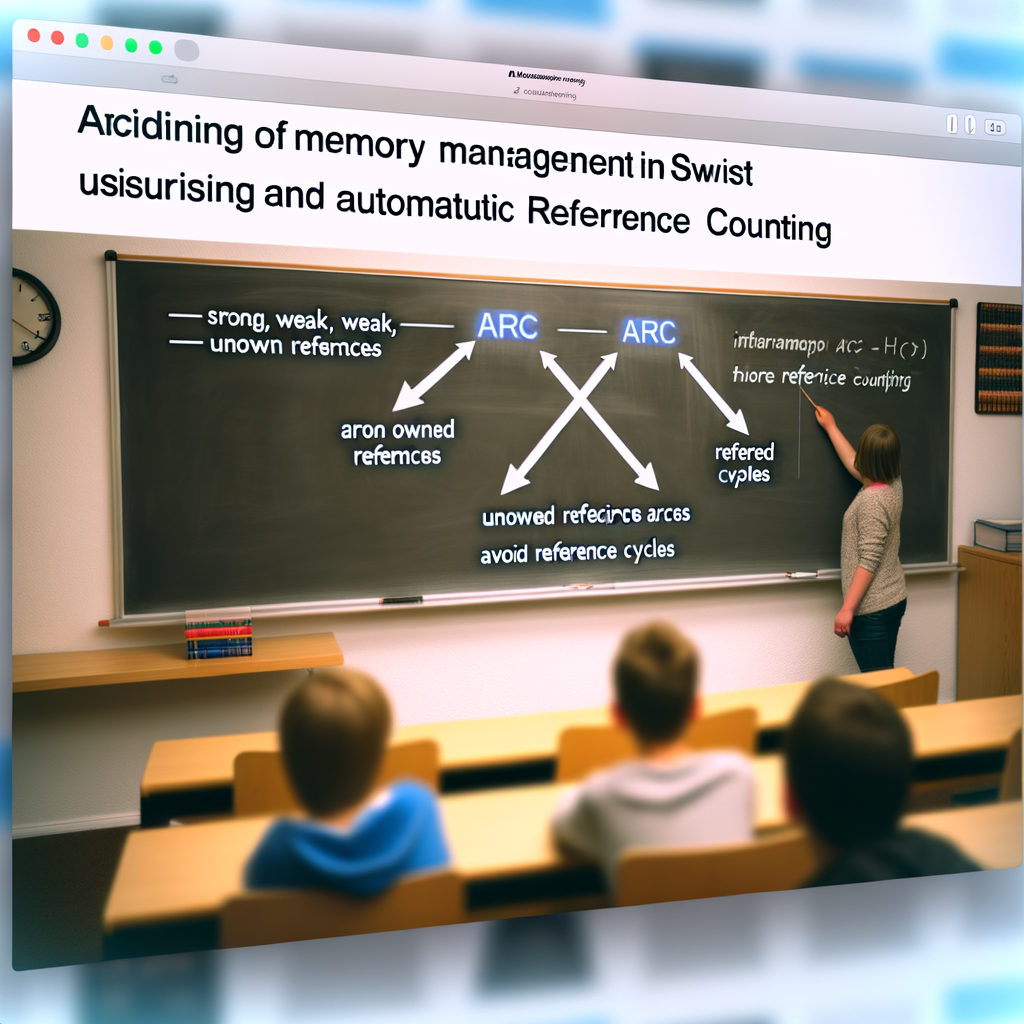
Automatic Reference Counting (ARC) is a cornerstone of Swift's memory management system, ensuring efficient and automatic memory allocation and deallocation of class instances. By understanding and properly using ARC, developers can create apps that run more smoothly without manually managing memory.
ARC tracks how many references there are to each class instance. When an instance's reference count drops to zero, ARC automatically deallocates that instance to free up memory. This ensures that objects are kept in memory for as long as they are needed, and no longer.
In Swift, there are three types of references used to manage memory: strong, weak, and unowned.
Strong References: These are the default reference types and they increase the reference count of an instance, ensuring it remains in memory as long as the reference exists.
Weak References: These references do not increase the reference count, allowing the instance to be deallocated even though the reference still exists. Weak references are useful when dealing with reference cycles to prevent memory leaks.
Unowned References: Similar to weak references, unowned references do not increase the reference count. However, they are used when the developer is certain the referenced instance will never be deallocated for as long as the reference exists, providing a more tightly coupled relationship than weak references.
Reference cycles occur when two instances hold strong references to each other, preventing deallocation. By using weak and unowned references, developers can break these cycles. Weak references are ideal for instances with a shorter lifespan, while unowned references work well when both instances have similar lifetimes.
Consider a classroom and student relationship. If both the classroom and student have strong references to one another, a reference cycle will occur. Instead, using a weak reference for the student back to the classroom mitigates this issue.
class Classroom {
var student: Student?
}
class Student {
weak var classroom: Classroom?
}Swift's ARC provides developers with powerful memory management capabilities without the need for manual memory allocation and deallocation. Understanding strong, weak, and unowned references helps in effectively managing object lifetimes and avoiding memory leaks due to reference cycles. By leveraging these concepts, developers can ensure their Swift applications are efficient and robust.